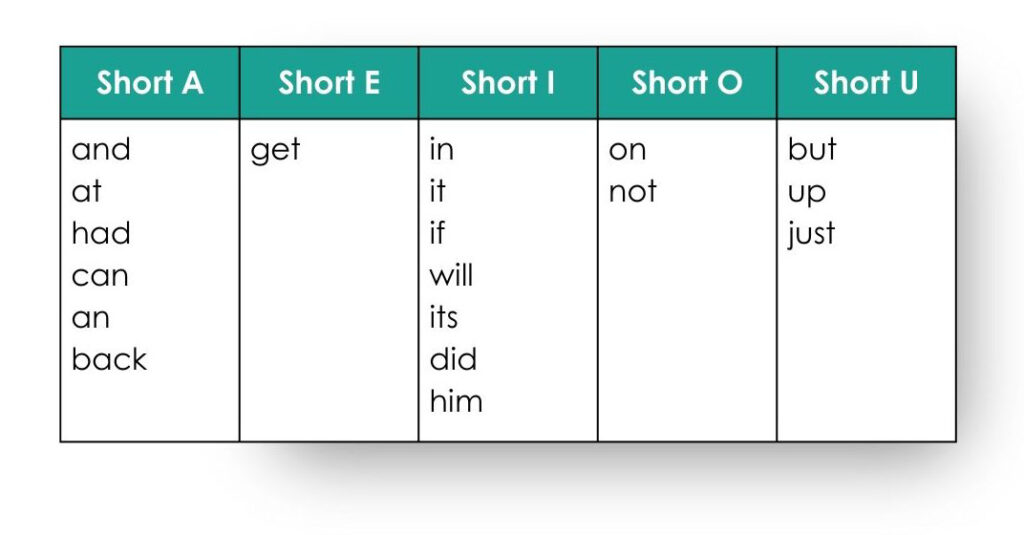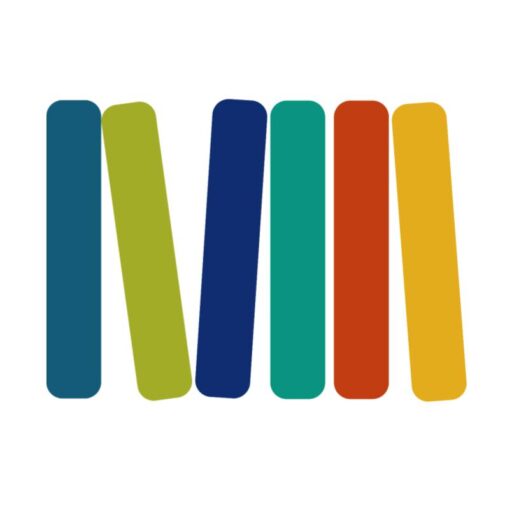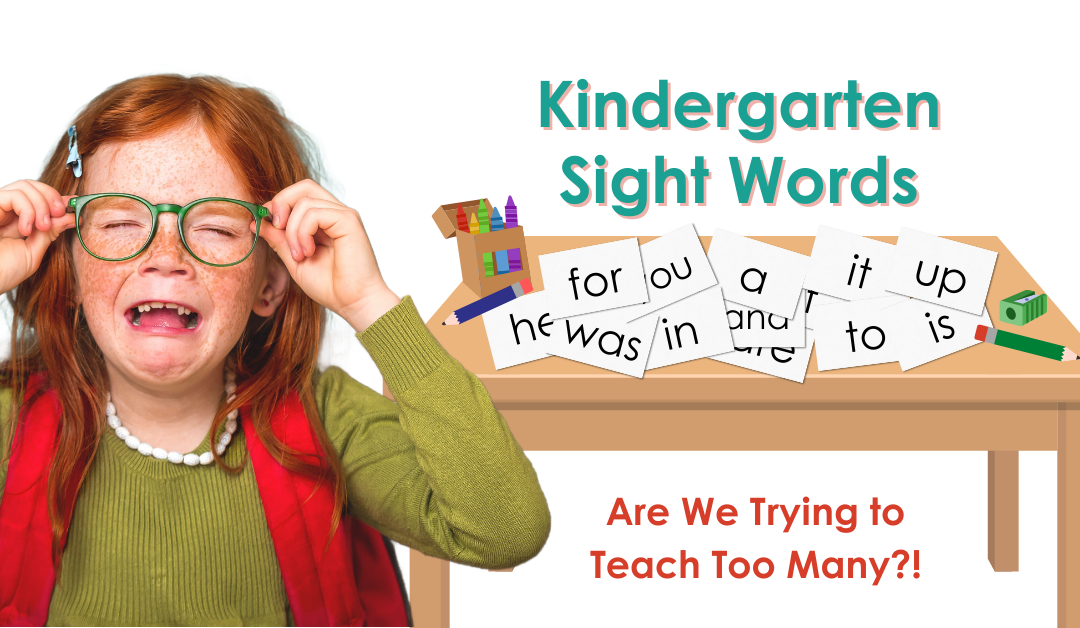Teaching high-frequency words, often called sight words, is a common component of kindergarten literacy instruction. Yet, the road to mastering these important but pesky little words is often bumpy. Frustration is common for students, not to mention the adults trying to help them.
And since so much instructional time and effort is dedicated to this labor of learning, it might be important to step back and ask some questions.
“Are we trying to teach too many sight words to kindergarteners?
“Do we start teaching sight words to kindergarteners too soon?”
And “Are the methods we rely on truly brain-friendly?”
Kindergarten Sight Word Lists - How Many Are Enough?
Many schools have a set number of high-frequency words that students need to learn by the end of the kindergarten year—25, 75, 125, or even more. The length and content of these high-frequency word lists vary from school to school, but there is no research pointing to a precise number of sight words that are best for students in particular grades.
Our experience is that, in many cases, kindergarten students are often expected to learn too many high-frequency words too fast (especially those with irregular spellings), which causes frustration for them and their teachers. Worse yet, this frustration often goes home with students as we extend the burden of learning these words, many of which are irregularly spelled, into the home environment, where their caregivers are recruited to pitch in with word-learning practice and drills.
With a long list of words and limited learning time, treating these words like a to-do checklist to be tackled and crossed off from top to bottom can be tempting. However, the goal for beginning readers should be less about getting them to memorize a specific set of words and more about helping them become confident word learners.
How Do Students Become Skilled Word Learners?
To become strong word learners, students need three essential awareness-es:
- Phonemic Awareness: The awareness of the individual sound slices that make up all words (phonemes)
- Phonics: The awareness that the individual sounds in words can each be represented by an individual spelling (grapheme) made up of one or more letters
- Alphabetic Principle: The awareness that the order in which phonemes are spoken in a word determines the precise order (left-to-right) in which the matching graphemes are written in a word
These three essentials seem obvious to those of us who’ve been reading for decades. But, for children still learning to read, these understandings are anything but obvious. Helping children acquire these essential awarenesses requires intentionality and effort.
One thing that can get in the way of students building these three essential understandings is that at the same time, they are trying to get a handle on how written words work, we ask them to shift their attention to trying to “just memorize” a whole lot of irregularly spelled, high-frequency words–the, was, of, one—that seem to be rule-breakers (even though they really aren’t).
Sight Word Lists for Kindergarten—Which Words Should be Taught?
So, How Do We Teach High-frequency Words?
Part of the solution is to limit the number of irregularly spelled words we introduce early on. Instead of focusing lots of energy on learning unrelated and irregularly spelled high-frequency words, our efforts are better spent prioritizing decodable words that allow children to use and reinforce the decoding skills they’re acquiring. Words like did, can, it, and on are great examples of high-frequency words that follow predictable patterns, reinforcing a beginning reader’s new understanding of how words work.
Of course, eventually, all students need to learn some irregularly spelled words. The word THE, for example, is THE most frequently used word in THE English language. So, even though nothing about its spelling matches what children first learn to expect when they encounter the letters T, H, E, it is an example of an irregularly spelled word that you will need to teach sooner rather than later, but of course, with brain-friendly methods, instead of just through chanting and memorization.
Kindergarten Sight Word Lists
As you consider which high-frequency words will be most useful for your beginning readers, we have a few resources to help. If you work with children beyond kindergarten, we invite you to download our list of 109 Power Words. These high-frequency words are organized from most frequently to least frequently occurring, and they include a mix of words from those that are highly decodable to those that are full of irregularities.
But here’s the exciting part: you don’t have to teach your kindergarteners all 109 of these words! The first 13 words on this list—the, of, and, a, to, in, is, you, that, it, he, for, was—make up about 25% of the words in print, so if you teach just those 13 words your students will know one out of four of all the words they will encounter across their reading lives. Imagine the reading power that will give your students! Just 13 words! We think that’s pretty amazing.
If you work with kindergarten students or students at the very beginning stages of reading, we have a sight word download just for you, and it includes the 13 most used words in English.
These 13 little words are excellent candidates for kindergarten sight word instruction because of their frequency. Yet, as you consider the list of 13, you’ll want to ask yourself which of the 13 words your students will be able to learn using their basic phonics skills and which will require dedicated explicit instruction.
Decodability Matters
As we consider any list of sight words, it’s important to ask a few questions:
- How frequently does this word appear in children’s texts?
- Does the word follow predictable spelling patterns?
- Will students have ample opportunities to encounter this word in reading and writing?
For example, many words, like am, and, or on, don’t need explicit instruction because they follow simple phonics rules. In other words, the graphemes represent their most commonly spelled sound. However, words like the or of do need focused teaching because the sounds they represent are less predictable.
Learning to think about high-frequency words in terms of decodability can help us be more selective about which words we teach explicitly and which we weave into phonics practice. The table below shows words from the 109 Power Words list that children can read and write as long as they have basic decoding knowledge of closed syllable words—no specialized instruction is required!

Sight Word Worksheets and Activities for Kindergarten?! Be Careful!
So, what does effective sight word instruction look like?
The truth is that traditional activities alone, like chanting, flashcards, or even rainbow writing, won’t lead to real word learning, especially for irregularly spelled words. While these activities can be fun for children, they typically don’t allow them to do the critical work of word mapping—aligning a word’s sounds (phonemes) and their spellings (graphemes).
Instead of traditional and widespread methods of teaching children to memorize words visually (which the human brain actually can’t do well), you can engage in a process that allows students to study the words more deeply. Using sound boxes and practicing careful word analysis are examples of activities that are far more effective in truly learning these tricky words—remembering how to read them, use them, and write them—than repetitive visual or auditory drills. And work that involves reading and writing these words in context can also help students make the necessary connections between phonemes, graphemes, and meaning—all of which come into play to support automatic reading, writing, and understanding any words.
Conclusion: Less Is More
The number of kindergarten sight words isn’t what’s most important. What matters most is that we help students become strong word mappers. When we carefully choose words for explicit instruction and ensure that the activities we use support how the brain learns, we can set our students up for long-term success in reading.
As a wrap-up, here are ten takeaways for making your high-frequency word instruction brain-friendly for beginning readers:
- Limit the number of irregular words introduced in kindergarten.
- Don’t start sight word instruction until students have some basic phonics and some blending skills under their belts.
- Let children decode regularly spelled high-frequency words rather than try to “memorize them.”
- Narrow the irregularly spelled words you teach to those that children will use most or must know to read an upcoming text.
- Focus the very beginning of the kindergarten year on those essentials they will need to learn any word successfully: phonemic awareness, phonics, and alphabetic principle.
- Explicitly teach irregularly spelled high-frequency words by showing students how the phonemes and graphemes in the words align.
- Connect all word learning back to how the word is used in context.
- Keep in mind that children don’t truly know a word until they can read it instantly and automatically, write it fluently, and correctly use/understand it in context.
- Don’t suspend language comprehension work in order to put more time into sight word learning or other foundational skills. Kids need both!
- Focus on the process of how the brain learns words. Once students know how to map words, they will be able to learn words on their own, and you won’t have to do as much explicit teaching.
By focusing on brain-friendly and meaningful practices for learning irregularly spelled words, we free up more time for crucial phonics and language comprehension instruction. And that’s where the real magic happens.
If you’re interested in learning more about a simple high-utility procedure to teach any word—especially irregularly spelled high-frequency words—and make it really stick, we invite you to explore the mini-course and classroom materials we developed called Sight Word Success. Or, check out Shift 4 in Shifting the Balance.
-

Jan Burkins and Kari Yates are authors, speakers, and consultants, who are dedicated to helping teachers around the world translate reading science into simple instructional moves that help teachers make learning to read easier for their students while still centering meaning-making, engagement, and joy.
Recent Posts


Yay!
There is so much good and practical wisdom in this post.
Thank you.
I’m curious about the sound boxes in this blog. For the word “long” do you always separate the n and the g into 2 separate boxes? I’ve been putting them in one box together.
Hi JJ. This blog post might help you: “Using Elkonin Boxes to Enhance Phonemic Awareness in Early Literacy“.
Thank you for this valuable resource. However, the headings are still wrong in the “corrected” version you emailed.
Hi Jennifer. Can you clarify what you mean?
Thank you!
Say it louder for ALL to hear.
Children are getting so frustrated and confused!
What is the rush?!?!